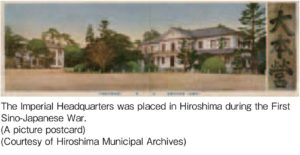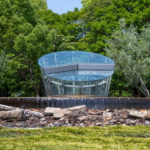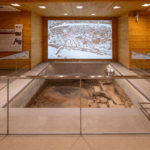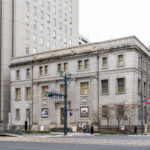Q1 What was Hiroshima like before the atomic bombing?
 At the end of the 16th century, Hiroshima was a small village with some small islands that floated on the mouth of the Ota River. In 1589, warlord Terumoto Mori started construction of his castle there. Two years later, he moved into this castle to rule the area and named it “Hiroshima.” Terumoto Mori joined the Western Army against Ieyasu Tokugawa in the Battle of Sekigahara in 1600 and lost the battle. After the battle, Mori was transferred to the provinces of Suo and Nagato and Masanori Fukushima, then appointed as lord of Hiroshima-han (a feudal domain), but in 1619, he lost his holdings for unauthorized castle repairs. Nagaakira Asano became the next feudal lord. Afterwards, Hiroshima had been a castle town of Hiroshima domain, with yielding of 430,000 koku of rice, governed by the Asano Family throughout the Edo period. Hiroshima developed as big city which was surrounded by inner and outer moats and canals, and with residential areas and temple districts established along with the Saigoku Kaido Road, which passed through the southern area of the castle.
At the end of the 16th century, Hiroshima was a small village with some small islands that floated on the mouth of the Ota River. In 1589, warlord Terumoto Mori started construction of his castle there. Two years later, he moved into this castle to rule the area and named it “Hiroshima.” Terumoto Mori joined the Western Army against Ieyasu Tokugawa in the Battle of Sekigahara in 1600 and lost the battle. After the battle, Mori was transferred to the provinces of Suo and Nagato and Masanori Fukushima, then appointed as lord of Hiroshima-han (a feudal domain), but in 1619, he lost his holdings for unauthorized castle repairs. Nagaakira Asano became the next feudal lord. Afterwards, Hiroshima had been a castle town of Hiroshima domain, with yielding of 430,000 koku of rice, governed by the Asano Family throughout the Edo period. Hiroshima developed as big city which was surrounded by inner and outer moats and canals, and with residential areas and temple districts established along with the Saigoku Kaido Road, which passed through the southern area of the castle.
After the establishment of a new Meiji government in 1868 followed by the Meiji Restoration, Hiroshima was made a prefecture in 1871, and the City of Hiroshima was established in 1889. As the prefectural capital, Hiroshima City developed into an economic and political center in western Japan. In 1889, construction of the Ujina port was completed. Then, railroad construction reached Hiroshima, and streetcars began operations in the city in 1912—Hiroshima’s transportation network has been developed. In addition, Hiroshima enjoyed its position as an industrial and educational center, with a booming spinning industry and the various educational institutions, such as the Hiroshima Higher Normal School. Hiroshima had become the core city of the Chugoku and Shikoku regions prior to World War II.
At the same time as the above developments, Hiroshima also developed into a military city. In the early Meiji period (1870s), the Hiroshima Garrison of the Fifth Military District (later reorganized and renamed the Fifth Division) was set up in Hiroshima, and troops such as the 11th Regiment of the infantry and the Western Drill Ground were set up around Hiroshima Castle. When the Sino-Japanese War broke out in 1894, Ujina port served as a gateway for dispatching military personnel and a 6-km military railroad, connecting Hiroshima Station and Ujina Port, was completed in a rushed construction project that took slightly more than two weeks. In September of that year, the Meiji Emperor moved the Imperial Headquarters from Tokyo to Hiroshima, to directly command the military, and the Imperial Diet was held in Hiroshima.  The city of Hiroshima served as a provisional capital until April 1895. After the Sino-Japanese War, various Army troops and facilities were established in Hiroshima. At the very end of the Pacific War, in 1945, the Headquarters of the Second General Army, integrating troops stationed in Western Japan,
The city of Hiroshima served as a provisional capital until April 1895. After the Sino-Japanese War, various Army troops and facilities were established in Hiroshima. At the very end of the Pacific War, in 1945, the Headquarters of the Second General Army, integrating troops stationed in Western Japan,
was established in Hiroshima as the last line of defense for Western Japan, to prepare for the anticipated decisive battles on the mainland.
Inquiries about this page
Hiroshima Prefectural Office
Street address:10-52, Motomachi, Naka-ku, Hiroshima-shi, Hiroshima-ken, 730-8511
Tel:+81-(0)82-228-2111








